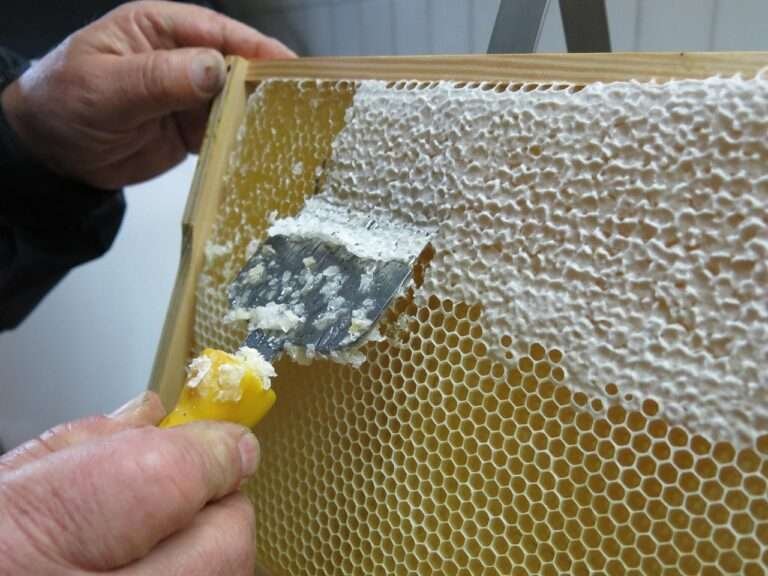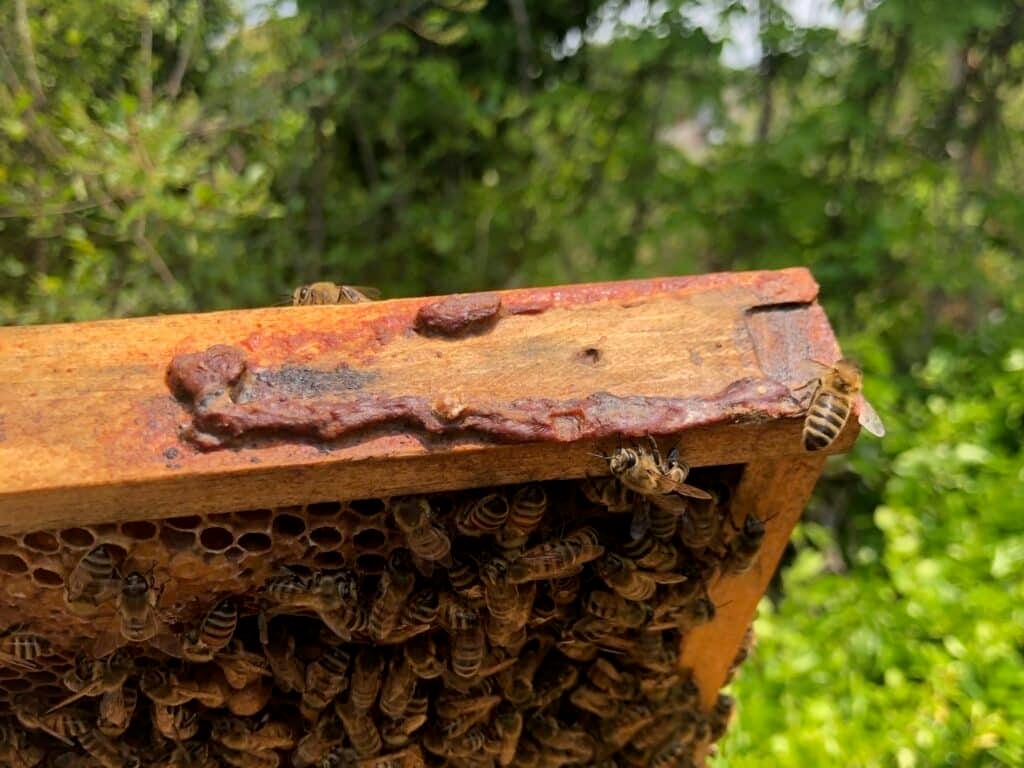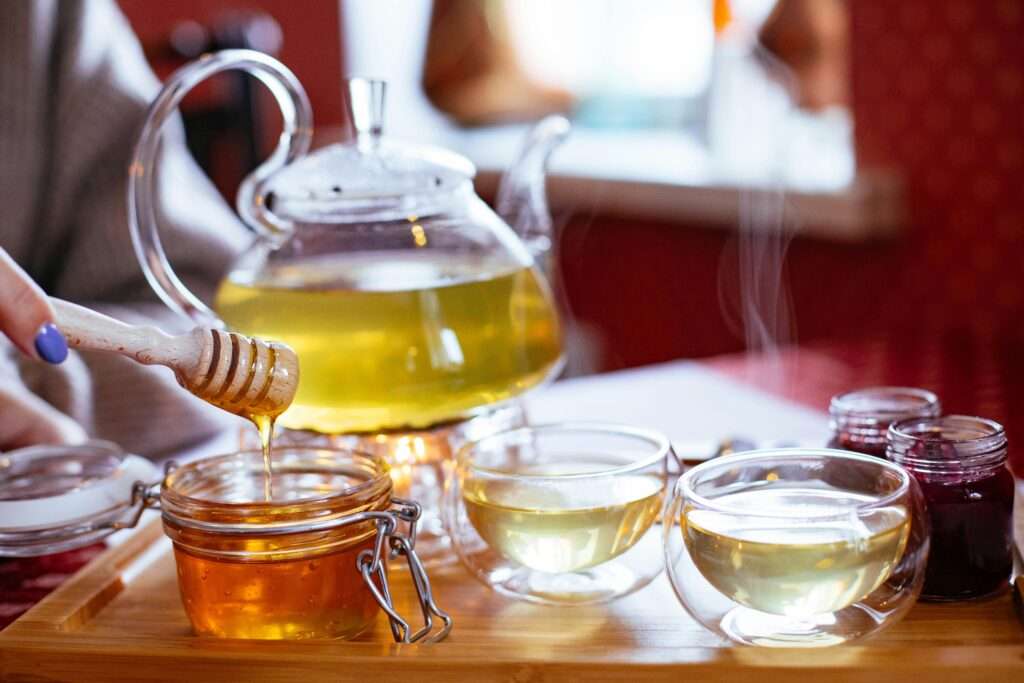The Best Ways to Process Honey Are:
Processing honey involves several key methods to transform raw honey from the hive into a finished product suitable for consumption or sale.
The choice of processing method depends on your scale of operation, equipment budget, and desired final product quality.
Overview of Honey Processing Steps
Honey processing follows a standardized sequence: harvesting frames from hives, uncapping honeycomb cells, extracting honey, filtering/straining, settling, and bottling [1][2].
Each step requires specific equipment and techniques to maintain honey quality while ensuring safe consumption.
Primary Extraction Methods
1. Centrifugal Extraction
Manual Hand-Crank Extractors
Manual extractors are ideal for small-scale operations processing 2-20 frames at a time [3][4].
These units use centrifugal force to spin honey from uncapped frames, with honey collecting at the bottom of the extractor.
Hand-crank models require physical effort but offer excellent control over the extraction speed [5].
Electric Extractors
Electric extractors handle larger volumes more efficiently, processing 4-60 frames depending on size [5][6].
Commercial operations often use electric units with variable speed controls to optimize extraction for different honey viscosities [7][6].
2. Crush and Strain Method
This traditional method involves cutting honeycomb from frames, crushing the comb to break open cells, then straining through filters to separate honey from wax [3][8].
While labor-intensive, this method works well for small batches and requires minimal equipment investment – just a crusher, strainer, and collection containers [9][10].
Essential Processing Equipment
Harvesting and Uncapping Tools
- Complete bee suit with veil for protection [3][1]
- Smoker and fuel to calm bees [3][1]
- Hive tool for frame removal [3][1]
- Uncapping knife (heated or cold) or uncapping fork [3][1]
- Uncapping tank to collect wax cappings [3][1]
Extraction Equipment
- Honey extractor (manual or electric) sized for your operation [3][5]
- Food-grade collection buckets [3][1]
- Frame gripper for handling frames [3]
- Clean, covered containers for transporting frames [3]
Filtering and Processing
- Multiple mesh strainers (1000, 250, and 100 microns for thorough filtration) [11]
- Cheesecloth or fine filters for final straining [8][12]
- Settling tanks or buckets for gravity separation [1][13]
- Honey sump with heated filtration system for larger operations [14]
Filtration and Quality Control
Straining vs. Filtering
Straining removes large debris like bee parts and wax chunks using coarse filters (200-400 microns), while preserving pollen and maintaining “raw” honey status [15][16]. Commercial filtration uses fine filters under pressure to remove even pollen, creating clear honey with extended shelf life [17][16].
Multi-Stage Filtration Process
Professional operations use cascading filtration: honey passes through 1000-micron mesh to remove wax and large particles, then 250-micron mesh, and finally 100-micron filters to eliminate bee parts [11]. This ensures contamination-free product suitable for commercial sale.
Temperature Control During Processing
Maintaining proper temperature is crucial – honey flows best at 35-40°C (95-104°F) during processing [14][6]. Higher temperatures can damage beneficial enzymes and create unwanted compounds like hydroxymethylfurfural (HMF) [18][19].
Pasteurization Considerations
Why Pasteurize Honey
Pasteurization kills yeast cells that can cause fermentation and slows crystallization, extending liquid shelf life [20][21]. The process involves heating honey to 63-75°C (145-167°F) for specific time periods, then rapid cooling [20][22].
Raw vs. Pasteurized Options
Raw honey retains all natural enzymes, pollen, and beneficial compounds but may crystallize faster [22][23]. Pasteurized honey has longer shelf stability and uniform appearance but loses some nutritional properties through heat treatment [22][24].
Storage and Packaging Best Practices
Optimal Storage Conditions
Store processed honey at room temperature (21-30°C/70-86°F) in airtight containers away from direct sunlight [25][26]. Glass jars with tight-fitting lids are ideal, while avoiding non-food plastics or metal containers that can cause oxidation [25][27].
Moisture Content Management
Maintain honey moisture below 18.5% to prevent fermentation – properly capped honey from healthy hives typically meets this standard [2][19]. Use a refractometer to verify moisture levels before packaging [2].
Container Selection
Choose food-grade glass, HDPE plastic, or stainless steel containers with airtight seals [27]. Proper sealing prevents moisture absorption and contamination while preserving flavor and quality [26][28].
Scale-Appropriate Processing Methods
Small-Scale (1-10 hives)
Use manual extraction with 2-4 frame hand-crank extractors, basic straining equipment, and simple settling buckets [3][29]. Total investment under $500 for basic setup [4].
Medium-Scale (10-50 hives)
Electric extractors with 6-20 frame capacity, heated honey sumps for faster filtration, and larger settling tanks improve efficiency [14][6]. Investment range $2,000-10,000 depending on automation level.
Commercial-Scale (50+ hives)
Automated extraction lines with conveyor systems, heated processing rooms, multi-stage filtration, and bulk storage tanks maximize throughput [30][7]. Professional equipment costs $20,000-100,000+ but processes hundreds of pounds per hour.
The key to successful honey processing is matching your method and equipment to your production scale while maintaining quality standards. Start with basic equipment and upgrade as your operation grows, always prioritizing food safety and honey quality in your processing decisions.
⁂
- https://blythewoodbeecompany.com/blogs/news/how-honey-is-processed
- https://worldofhoney.com/2024/01/08/raw-honey-production/
- https://beeinspiredgoods.com/blogs/beekeeping/honey-harvest
- https://www.instructables.com/Extracting-Honey/
- https://www.mannlakeltd.com/extracting-bottling/honey-extracting-equipment/
- https://www.youtube.com/watch?v=6wMNRWoFjNA
- https://www.youtube.com/watch?v=ngUW0XRdgfk
- https://www.betterbee.com/instructions-and-resources/how-to-extract-honey.asp
- https://www.youtube.com/watch?v=liUwbNw2XIg
- https://www.beesource.com/threads/small-scale-honey-extraction.241963/
- https://kadant.com/en/blog/optimization/case-study-hi-flo-filters-used-in-the-processing-of-honey
- https://www.betterbee.com/harvesting-and-processing/bottling-and-filtering.asp
- https://entnemdept.ufl.edu/media/entnemdeptifasufledu/honeybee/pdfs/abj-field-guide-to-beekeeping/34,-November-2016,-Basic-Equipment-Needed-to-Extract-and-Bottle-Honey.pdf
- https://www.youtube.com/watch?v=r0feWlb3gRQ
- https://carolinahoneybees.com/filtering-honey/
- https://www.reddit.com/r/Beekeeping/comments/tygjdf/what_is_considered_straining_vs_filtering_honey_i/
- https://www.burlesons-honey.com/honey-filtration-facts/
- https://www.crchoneybeeproducts.com/wp-content/uploads/2022/12/Case-study_Authentication-and-quality-control-of-honey.pdf
- https://wikifarmer.com/library/en/article/which-factors-affect-honey-quality
- https://foodtechprocess.com/blog/post/24_honey-pasteurization-
- https://www.beemaid.com/the-buzz/sweet-facts-faq/honey-pasteurization/
- https://wendellestate.ca/blog/pasteurized-unpasteurized-honey/
- https://www.clubhouse.ca/en-ca/articles/pasteurized-vs-unpasteurized-honey
- https://www.honeybeesuite.com/honey-pasteurization/
- https://siouxhoney.com/best-practices-for-storing-honey/
- https://www.dadant.com/tips-tricks-how-to-package-store-honey/
- https://australianbeeproducts.com.au/blogs/news/the-best-storage-techniques-for-bulk-raw-honey
- https://astorapiaries.com/blogs/nyc-beekeeper/how-to-store-and-preserve-your-honey
- https://www.keepingbackyardbees.com/9-tips-for-an-easier-honey-harvest/
- https://www.youtube.com/watch?v=vFf-AAKz7IM
Ad – Amazon Associate Store
- Versatile Tool: This 18-pin stainless steel uncapping fork is designed for efficiently uncapping honeycomb frames during…
- Durable Construction: Featuring a sturdy yellow plastic handle and rust-resistant stainless steel tines, this tool is bu…
- Efficient Design: The fork’s dense array of pins allows for quick and thorough uncapping of honeycomb cells.
- Premium Stainless Steel Roller: Constructed from high-grade stainless steel, this extractor’s roller resists rust and we…
- Adjustable Height for Custom Comfort: Enjoy a personalized working experience with a height range of 37.4″ (95 cm) to 41…
- Multi-Frame Compatibility: Designed to handle diverse hive setups, this extractor processes 2 deep frames, 4 medium fram…
- Complete Beekeeping Tool: our beekeeping tool kit takes into account all your beekeeping needs; It includes a double sie…
- Quality Assured Material: made of sturdy stainless steel, wood or nylon, these beekeeping tools are designed to last; Th…
- Efficient Honey Filtration: our double sieve stainless steel honey strainer is about 9.84 x 9.84 x 3.94 inches/ 25 x 25 …
- 🔪 Effortless Honey Extraction: Extracting honey has never been easier! Our Sunvara Electric Uncapping Knife simplifies t…
- 🔪 Versatile Beekeeping Essential: A must-have addition to your beekeeping supplies. This electric uncapping knife is per…
- 🔪 Gentle on Honeycomb, Tough on Efficiency: Designed with your honeycomb’s delicate structure in mind, our knife ensures…
- All-in-One Beekeeping Kit:Our Beekeeping kit has 20 pieces of professional tools to assist you in finishing all beekeepi…
- Complete Beehive Supplies and Equipment:you will receive beekeeping equipment tool that includes tools for honey uncappi…
- Premium-Quality & Bee-Safe Materials:Made from sturdy, non-toxic pine wood for the hive and food-grade stainless steel f…
- Material: stainless steel blade and wood handle.
- Total length :16 inches. Blade length :11 inches.
- This serrated uncapping knife has a sharp edge for easily maintaining the Hive.
- Essential beehive tool: A bee brush is one of the most important tools you will need during hive inspections and extract…
- Convenient size: The 14-inch brush is small enough to carry and easily store, but large enough to brush bees away with j…
- Wood handle: Constructed of natural wood for a professional look and feel. Material is long-lasting and helps ensure a s…
- Large Capacity: Fits up to 12 medium/small frames or 4 deep frames—great for hobbyists and professionals
- Easy to Move: Side handles make lifting and moving simple, perfect for any size beekeeping setup
- Adjustable Speed & Safety Features: 140W motor with speed control, plus emergency stop and auto shutoff when the lid is …
- ALL-IN-ONE HONEY BOTTLING AND STRAINING KIT: Your ultimate solution for bottling and filtering honey, this kit combines …
- BUILT TO LAST: Our kit is crafted from #2 food-grade recyclable plastic and rust-resistant stainless steel strainers. Th…
- PRECISION HONEY GATE: Our unique, no-drip honey gate features dual gaskets and a set screw for a leak-free experience. D…
- 🍯EFFORTLESS HONEY EXTRACTION: Our Sunvara 20L honey bucket set features a top-of-the-line honey extractor, designed for …
- 🍯HIGH-QUALITY STAINLESS STEEL STRAINER: The double-layer stainless steel strainer included in this set ensures the highe…
- 🍯VERSATILE BEEKEEPING EQUIPMENT: As dedicated beekeepers, we understand the importance of having the right tools. That’s…













